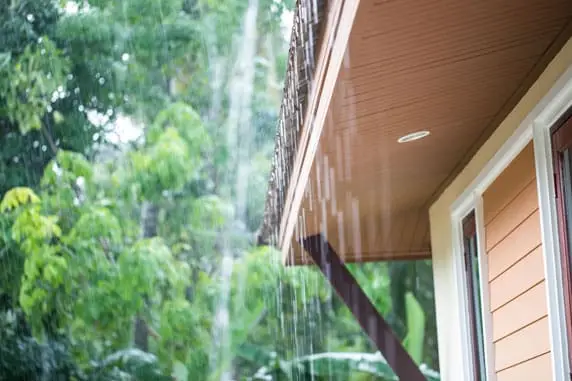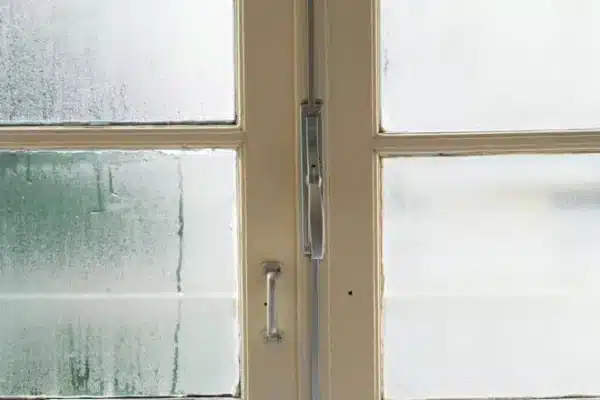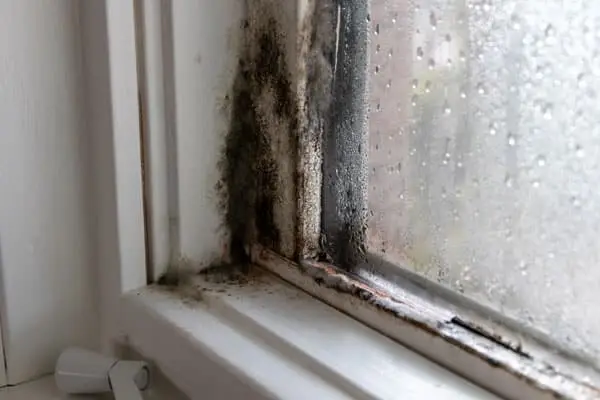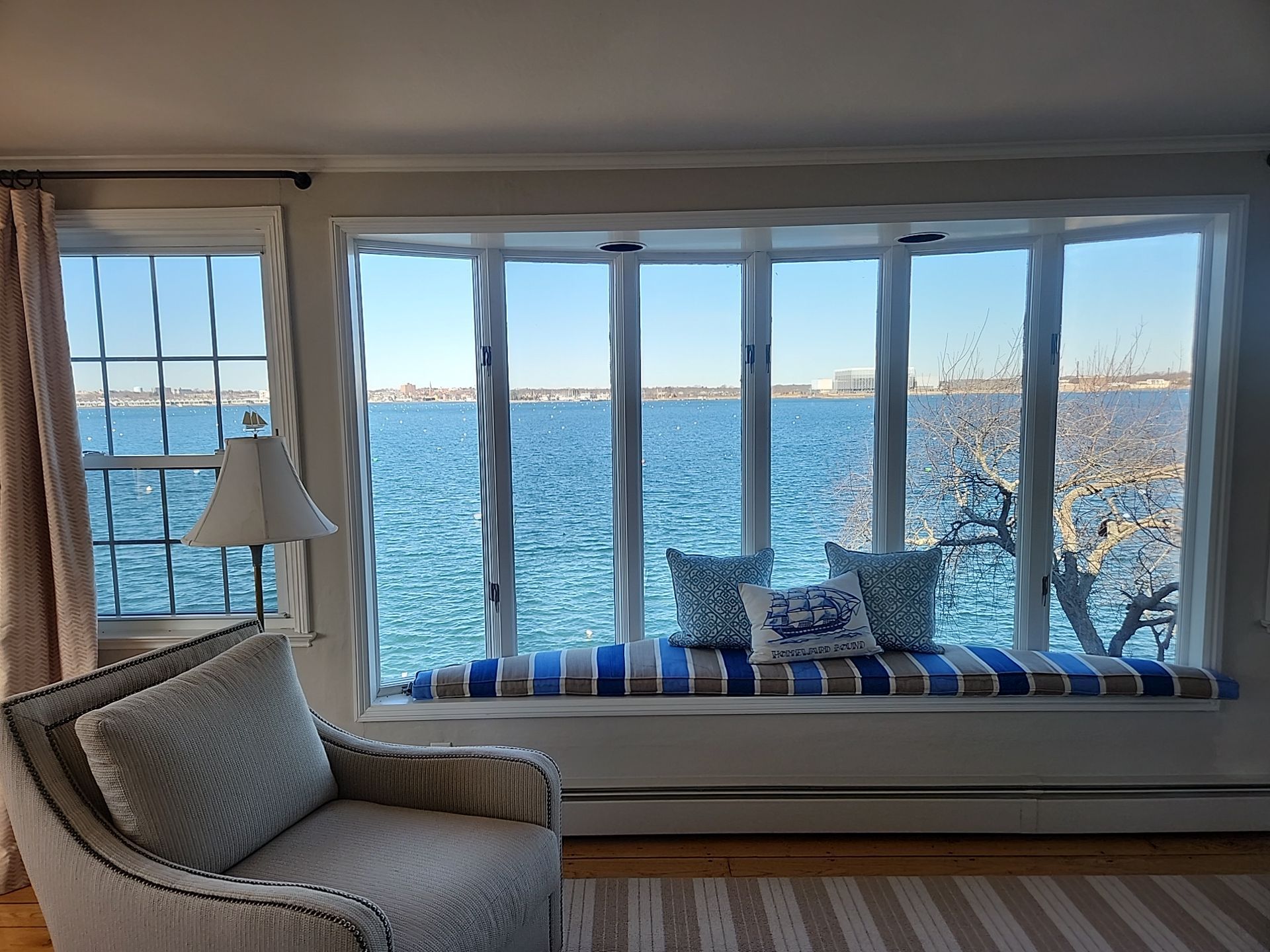As winter fades away, telltale signs of moisture damage from snowy weather become prominent on old wood windows. One of the first steps to take is inspecting old windows for moisture damage, especially if your New England home has wood window frames. If the window becomes damaged, you might find yourself saying, “My windows are leaking water!”
Table of contents
In this blog, we will show you the signs that your windows are leaking water, along with the proper steps to stop window leaks.
Watch for Water Damage on Windows
Your windows have a big job—they reduce your energy bills while keeping your home dry. But harsh weather conditions such as snow, ice, and rain can wear down your windows over time, both in terms of aesthetics and performance.

If you’re looking for water damage on your home’s windows, it will be more prevalent on wood windows. It is very easy for wood window frames to succumb to moisture damage, as well as mold, and mildew growth, especially if they are not properly maintained. Signs of damage can include peeling paint and rot in wood windows and frames.
Water damage is unlikely to occur with vinyl replacement windows. These windows also have weep holes that prevent water damage.

Window weep holes drain water from your windows while preventing airflow into your home, and small flaps cover the holes to keep the wind from blowing through them. Additionally, the exterior holes are not aligned with the interior holes, which prevent direct airflow.
Why Do Windows Leak Water?
If your windows are leaking water, you might wonder why this problem is happening in the first place. Windows leak water for several reasons and they depend on where the leak is coming from.
The Water is Coming from Around the Window
Depending on where the leak is located, the water can seep in from the top, sides, or bottom of the window. This happens when the sealant or caulk around the window becomes old and cracked, allowing rain to enter the house. Replacing the old caulking with new caulk is a simple fix.

However, if the windows are old and underperforming, caulk is a band-aid resolution, and it’s only a matter of time until the caulk fails again.
The Water is Leaking from the Top
Top-of-the-window leaks can indicate installation mistakes. It could be that the flashing was improperly installed, or it may not exist at all. A poorly installed house wrap could also lead to leaking windows.
Unfortunately, you can’t exactly fix this type of window leak by applying caulk. The house wrap and flashing tape around and above the window may be removed. In addition to keeping water flowing away from the siding, house wrap also acts as a moisture barrier.
The Window Leaks from the Bottom
When customers call us asking for help with leaky windows, the leak could also be coming from the bottom of the window.
Windows with metal or vinyl frames usually have drain holes near their bottom edges. These holes allow water to escape but can become clogged with debris. Using a wire coat hanger, you can clean out the holes.
Water leaks between the sill pan and the window sill are more likely to occur near the bottom where the sill slopes. The sill of every window should slope away from the window so that water can drain to the exterior of the house. The window may need to be reinstalled if either of these is incorrect or missing.
How to Detect Moisture Damage in Windows
If you suspect that your windows are leaking water, you might be unsure about what to look for in terms of moisture damage. Moisture damage can be obvious, but other times the signs are inconspicuous and go unnoticed.

These are the most common signs of moisture damage in windows:
- Check for discoloration around the windows and on the frames. You might find water spots and stains in the home that are brown, yellow, or copper in color.
- Cracks, bubbles, and peeling paint are all symptoms of potential window leaks.
- Changes in the texture of wood may also indicate window leaks. As an example, wood window frames may buck when they become detached from the siding. As well as sagging window frames, wood window frames may feel spongy from moisture damage.
- Mold and mildew can grow both inside and outside of walls under the right conditions.
- With severe moisture damage, you can poke a wood window frame with a screwdriver and it will sink right through the frame.
- The window has foggy glass that won’t wipe away.
- You feel a draft around your windows.
- You’re experiencing high energy bills.

How to Prevent Your Windows from Leaking Water

Leaks around windows are a common problem in homes, but it doesn’t have to be that way. Taking the right steps to prevent your windows from leaking water can save you time and money in the future. The most common causes of windows leaking water are worn weatherstripping, cracks in the window frame, or a combination of both. Here are some tips to help you keep your windows from leaking water:
- Check the weatherstripping around your windows regularly. If you notice any wear or tear, replace it immediately. This will help seal off any gaps around your window, preventing water from entering. It’s also a good idea to check the caulking around your windows for any cracks or gaps. If you find any, add additional caulking to close the gaps and prevent water from entering.
- Inspect your window frames for any cracks or damage. If you find any, seal them off with a waterproof sealant. This will help keep water out and prevent further damage to your window frames. If the damage is severe, you may need to replace the window frame altogether.
- If your windows are not sealed properly, air can leak through and cause condensation. To prevent this, make sure all windows are properly sealed and insulated. This will help reduce the amount of moisture in your home and keep your windows from leaking water.
- Finally, make sure your windows are properly maintained. Clean the glass regularly to prevent dirt and debris from blocking the drainage holes. Also, inspect the window frames periodically for any signs of damage or wear and tear. Taking these steps will help keep your windows from leaking water.
Keep in mind that new vinyl windows can help improve home performance while preventing leaks. By following these tips, you can help keep your windows from leaking water and protect your home from costly repairs in the future.
What to do if Your Windows are Leaking Water
If you suspect your home’s windows are leaking water, you’ll need to call in a window company to assess the situation. Leaky windows often call for a replacement, and you’ll want to choose moisture-proof vinyl replacement windows that are not prone to mold growth and other types of moisture damage.
Contact us today for a quote on a high-performance replacement and window contractor who provides professional installation!




